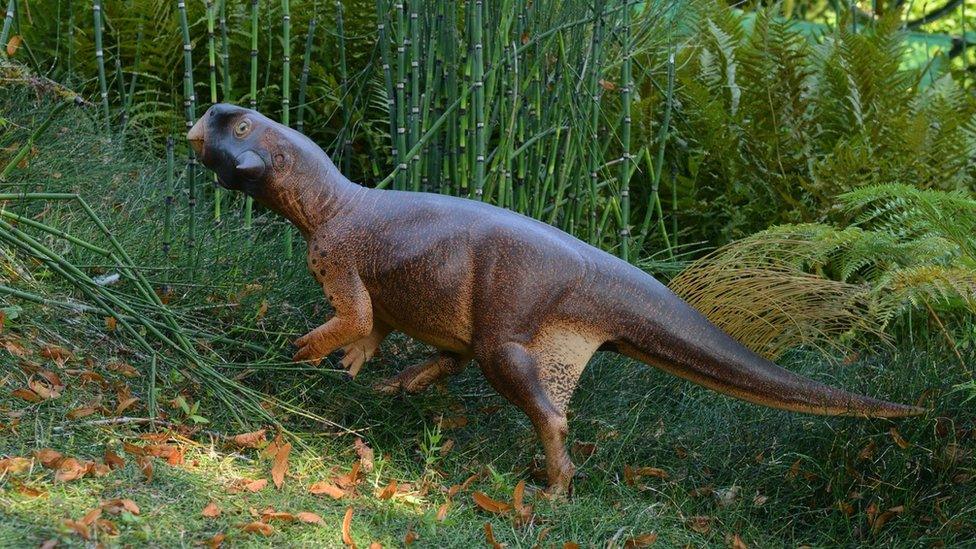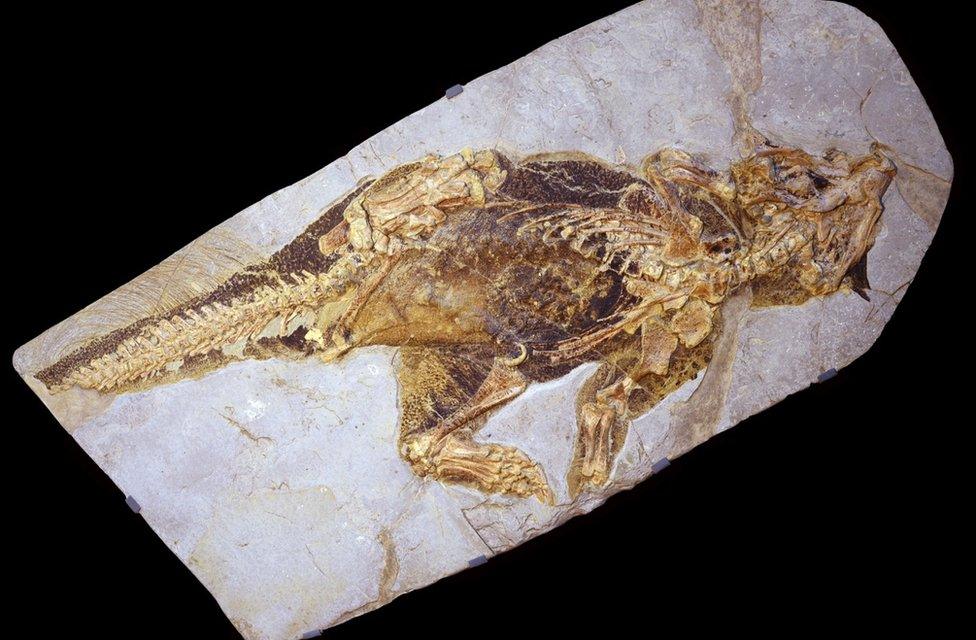Dinosaur's camouflage pattern revealed
- Published

The researchers teamed up with a palaeo-artist to create a 3-D model of the dinosaur
Scientists have recreated the colour patterns of a dinosaur, revealing a camouflage used by animals today.
A study of a well-preserved Chinese Psittacosaurus fossil shows it had a light underside and was darker on top - an arrangement called counter-shading.
This suggests the species lived in an environment with diffuse light, such as a forest.
As part of their research, the scientists teamed up with an artist to produce a 3-D model of the creature.
The findings, external by an international team of researchers have been published in Current Biology journal.
Co-author Jakob Vinther, from the University of Bristol, UK, said the camouflage pattern sported by this particular dinosaur "has been shown to function by counter-illuminating shadows on a body, thus making an animal appear optically flat to the eye of the beholder".

The fossil from China is exquisitely preserved
It may have protected them against predators that use patterns of shadow on an object to determine their shape - just as humans do.
Psittacosaurus - which means "parrot-lizard" in reference to its parrot-like beak - was an early relative of the three-horned dinosaur Triceratops, in a group known as the Ornithischians.
Previously, scientists have discovered that some fossils preserve "melanosomes" - small structures that carry melanin pigments found in the feathers and skin of many animals.
In some specimens, such as the Psittacosaurus, it's possible to make out the patterns of preserved melanin without the aid of a microscope.
The researchers projected the colour patterns found in the fossil onto a life-size model to explore how they might have helped the creature stay hidden.
They teamed up with Bristol-based palaeo-artist Bob Nicholls to build the physical recreation.
He said: "Our Psittacosaurus was reconstructed from the inside-out. There are thousands of scales, all different shapes and sizes, and many of them are only partially pigmented.

This artist's impression offers a detailed look at the dinosaur's camouflage pattern
"It was a painstaking process but we now have the best suggestion as to what this dinosaur really looked like."
The team members describe it as the most scientifically accurate life-size model of a dinosaur with its real colour patterns.
They also made a cast of this model which they painted in a uniform shade of grey. The scientists then investigated how shadows were cast on the animal.
This data could then be compared to the camouflage pattern to determine what kind of lighting was best at hiding the dinosaur.
Dr Vinther said: "We predicted that the psittacosaur must have lived in a forest. This demonstrates that fossil colour patterns can provide not only a better picture of what extinct animals looked like, but they can also give new clues about extinct ecologies and habitats.
"We were amazed to see how well these colour patterns actually worked to camouflage this little dinosaur."
The specimen is part of what's known as the Jehol Biota - animals which flourished in north-eastern China from 133 million - 120 million years ago.